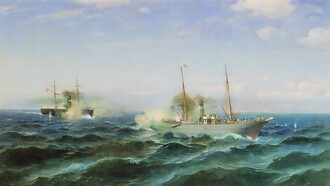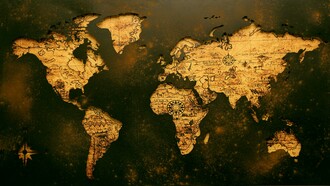On a Tuesday morning in a local African American community, cars line the streets. This group of “food insecure” (being without reliable access to sufficient quantity of affordable and nutritious food) Americans, the food patrons, are not black but whites from across the community. In the United States, more than half of the hungry households are white. While blacks and Latinos are disproportionately poor -- 27% black, 25% Latino -- most poor people in the United States are white.
Stereotypes of the poor are pervasive in the United States. Poverty is linked to moral inferiority. This stereotype undermines public support for all poor citizens including whites. With regard to poverty, there are similarities between poor whites and poor blacks, but they are equally sharp differences. How are poor blacks and poor whites alike? What contributes to the poverty of each, and how does each group respond?
Similarities
In both groups, black and white poor, there is most often a history of families experiencing generational poverty. Poverty is most likely generational for each group. Both poor blacks and whites are the descendants of enslaved, indentured, and marginalized groups in American society. Poor whites, especially in the mountain areas of Appalachia, are the descendants of enslaved and indentured whites who were sent to Virginia in the 1600s, and who later became exploited laborers and did not own land or slaves. The black poor are of course the descendants of enslaved Africans brought to the United States, and who remained in the lowest strata of the black social hierarchy.
Astonishing, the same moral inferiority and stereotypical images used to describe blacks in general are attributed to poor whites. Both groups are considered to inherit an innate inferiority. Poor whites are considered to be lazy with poor moral values, habits, and actions. Because of these stereotypes, both groups are considered to be lesser, undesirable, and outsiders.
Differences
The stark differences appear in the root causes of each group’s poverty and how it is treated by the media in this society. Institutional racism in all facets of society -- education, healthcare, housing, the criminal justice system and access to employment opportunities -- keep poor blacks mired in poverty. Classism prevents poor whites from escaping poverty. Poor whites are labeled and stereotyped as belonging to the lowest class of the American social hierarchy. They receive treatment only slightly better than that of blacks based on skin color. Despite his condition, a poor white man will be hired before a poor black man.
The media plays a large role in America’s collective mind about who is poor. The media over-emphasizes people of color in coverage of poverty and government benefits. Poor blacks are constantly paraded across television screens waiting for help at a free clinic or using food stamps to buy food. White poverty is denied by the media, despite the numbers of whites who are poor. The constant images of the black poor ultimately harm poor whites as well, as many whites are reluctant to support programs that they believe benefit only blacks.
The powerlessness experienced in poverty is reacted to both in similar and drastically different ways by the black poor and white poor. Both escape the pain of poverty through the abuse of alcohol and drugs; blacks experienced the crack epidemic; poor whites use opioids and meth to escape. Society, the media, and the criminal justice system criminalizes poor blacks who use drugs to escape the pangs of poverty, while drug use by whites is now considered a mental health issue.
When the black poor have had enough and must let off steam, they strike out at symbols of the system: they riot, burn, and loot. Poor whites on the other hand, do not strike out against the system but following white supremacy beliefs, engage in violence against black and brown people who they believe are benefiting from the system in some way that they aren’t.
The black poor express their frustration by denouncing the racist system. Poor whites cannot betray the oppressive system of white supremacy even as they are victims. The black poor can openly state that the American dream is a lie and that racism prevents them from partaking of the dream, but poor whites must accept and support the lie. Classism, unlike racism, does not give poor whites an outlet for criticizing the system. Because they are white, they must uphold the system that also oppresses them.
Finally, poor blacks when participating in the political system will vote for the candidate who will do the most for their race and class. The white supremacy mindset makes poor whites vote for the candidate that makes themselves suffer rather than benefit a black or brown. Benefits denied to blacks are benefits denied themselves, but they won’t believe it. As poor blacks are trapped by racism, poor whites suffer from the millstone of classism around their necks.
This famous line was spouted by Donald Trump during his campaign for the Presidency. He pointedly asked black voters in particular, what they had to lose by voting for him rather than the Democrat candidate. Race and class are intertwined in American society. To poor whites as another marginalized and neglected class, the same question with a slight twist might be posed: “What do you have to lose by refuting racist ideology and joining in a multiracial alliance of the poor?”
According to John T. Campbell, who in 1906 wrote The Broad Ax: “The real interest of the poor whites and Negroes were the same, that of resisting the oppression of the master class. But ignorance stood in the way.”
What can break the spell that white supremacy holds on poor whites?
What do whites have to lose by joining a class-based alliance of the poor?
How might they benefit economically?















